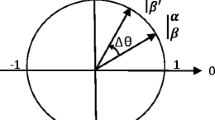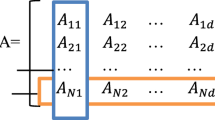Abstract
Feature selection is one of the important preprocessing steps in machine learning and data mining domain. However, finding the best feature subsets for large datasets is computationally expensive task. Meanwhile, quantum computing has emerged as a new computational model that is able to speed up many classical computationally expensive problems. Annealing-based quantum model, for example, finds the lowest energy state of an Ising model Hamiltonian, which is the formalism for Quadratic Unconstrained Binary Optimization (QUBO). Due to its capabilities in producing quality solution to the hard combinatorial optimization problems with less computational effort, quantum annealing has the potentiality in feature subset selection. Although several hard optimization problems are solved, using quantum annealing, not sufficient work has been done on quantum annealing based feature subset selection. Though the reported approaches have good theoretical foundation, they usually lack required empirical rigor. In this paper, we attempt to reduce classical benchmark feature evaluation functions like mRMR, JMI, and FCBF to QUBO formulation, enabling the use of quantum annealing based optimization to feature selection. We then apply QUBO of ten datasets using both Simulated Annealing (SA) and Simulated Quantum Annealing (SQA) and compared the result. Our empirical results confirm that, for seven in ten datasets, SQA is able to produce at most equal or less number of features in all selected subset compared to SA does. SQA also results in stable feature subsets for all datasets.
Access this chapter
Tax calculation will be finalised at checkout
Purchases are for personal use only
Similar content being viewed by others
References
Kumar, V., & Minz, S. (2014). Feature selection. SmartCR, 4, 211–229.
Goswami, S., Chakrabarti, A., & Chakraborty, B. (2018). An empirical study of feature selection for classification using genetic algorithm. International Journal of Advanced Intelligence Paradigms, 10, 305–326.
Tang, J., Alelyani, S. & Liu, H. (2014). Feature selection for classification: A review. Data Classification: Algorithms and Applications, 37.
Li, J., Cheng, K., Wang, S., Morstatter, F., Trevino, R. P., Tang, J., et al. (2017). Feature selection: A data perspective. ACM Computing Surveys, 50, 1–45.
Mueller, F., Dreher, P., & Byrd, G. (2019). Programming quantum computers: a primer with IBM Q and D-Wave exercises. In: Proceedings of the 24th Symposium on Principles and Practice of Parallel Programming, p. 451.
Yu, H., Huang, Y. & Wu, B. (2018). Exact equivalence between quantum adiabatic algorithm and quantum circuit algorithm. Chinese Physics Letters, 35, 110303.
Nielsen, M. A., & Chuang, I. (2002). Quantum computation and quantum information. American Journal of Physics, 70, 558–559.
Havlíček, V., Córcoles, A. D., Temme, K., Harrow, A. W., Kandala, A., Chow, J. M., et al. (2019). Supervised learning with quantum-enhanced feature spaces. Nature, 567, pp. 209–212.
Ushijima-Mwesigwa, H., Negre, C. F. A. & Mniszewski, S. M. (2017). Graph partitioning using quantum annealing on the D-wave system. In: Proceedings of the Second International Workshop on Post Moores Era Supercomputing. Denver, CO, USA.
Crosson, E. & Harrow, A. W.(2016). Simulated quantum annealing can be exponentially faster than classical simulated annealing. In: 2016 IEEE 57th Annual Symposium on Foundations of Computer Science (FOCS), pp. 714–723.
Brown, G., Pocock, A., Zhao, M.-J., & Luján, M. (2012). Conditional likelihood maximisation: A unifying framework for information theoretic feature selection. Journal of Machine Learning Research, 13, 27–66.
H. Peng, F. Long, and C. Ding, “Feature selection based on mutual information: criteria of max-dependency, max-relevance, and min-redundancy,” IEEE Transactions on Pattern Analysis & Machine Intelligence, pp. 1226–1238, 2005.
Yang, H. & Moody, J. (1999). Feature selection based on joint mutual information. In: Proceedings of International ICSC Symposium on Advances in Intelligent Data Analysis, pp. 22–25.
Yu, L. & Liu, H. (2003). Feature selection for high-dimensional data: A fast correlation-based filter solution. In: Proceedings of the 20th International Conference on Machine Learning (ICML-03), pp. 856–863.
Ciliberto, C., Herbster, M., Ialongo, A. D., Pontil, M., Rocchetto, A., Severini, S., et al. (2018). Quantum machine learning: A classical perspective. Proceedings of the Royal Society A: Mathematical, Physical and Engineering Sciences, 474, 20170551.
Biamonte, J., Wittek, P., Pancotti, N., Rebentrost, P., Wiebe, N., & Lloyd, S. (2017). Quantum machine learning. Nature, 549, 195.
Neukart, F., Compostella, G., Seidel, C., von Dollen, D., Yarkoni, S. & Parney, B. (2017). Traffic flow optimization using a quantum annealer. Frontiers in ICT, 4.
Ising, E. (1925). Beitrag zur Theorie des Ferromagnetismus. Zeitschrift für Physik, 31, 253–258.
He, Z., Li, L., Huang, Z., & Situ, H. (2018). Quantum-enhanced feature selection with forward selection and backward elimination. Quantum Information Processing, 17, 154.
Milne, A., Rounds, M., & Goddard, P. (2018). Optimal feature selection using a quantum annealer. In: High-Performance Computing in Finance, (Ed): Chapman and Hall/CRC, pp. 561–588.
Tanahashi, K., Takayanagi, S., Motohashi, T., & Tanaka, S. (2018, 2019). Global mutual information based feature selection by quantum annealing. https://www.dwavesys.com/sites/default/files/qubits2018_mifs_ver2.pdf.
Van Laarhoven, P. J., & Aarts, E. H. (1987). Simulated annealing. In: Simulated Annealing: Theory and Applications, (Ed). Springer, pp. 7–15.
Kadowaki, T., & Nishimori, H. (). Quantum annealing in the transverse Ising model. Physical Review E, 58, 5355–5363.
Dua, D., Casey, G. (2017, 2019). UCI machinle learning repository. https://archive.ics.uci.edu/ml/index.php.
Shinmorino, S. M. (April 15 2019). Solvers/annealers for simulated quantum annealing on CPU and CUDA(NVIDIA GPU). https://github.com/shinmorino/sqaod.
Acknowledgements
This is to acknowledge that the present work is supported by DST-JSPS (Indo-Japan) Bilateral Open Partnership Joint Research Project.
Author information
Authors and Affiliations
Corresponding author
Editor information
Editors and Affiliations
Rights and permissions
Copyright information
© 2021 Springer Nature Singapore Pte Ltd.
About this paper
Cite this paper
Mandal, A.K., Panday, M., Biswas, A., Goswami, S., Chakrabarti, A., Chakraborty, B. (2021). An Approach of Feature Subset Selection Using Simulated Quantum Annealing. In: Sharma, N., Chakrabarti, A., Balas, V., Martinovic, J. (eds) Data Management, Analytics and Innovation. Advances in Intelligent Systems and Computing, vol 1174. Springer, Singapore. https://doi.org/10.1007/978-981-15-5616-6_10
Download citation
DOI: https://doi.org/10.1007/978-981-15-5616-6_10
Published:
Publisher Name: Springer, Singapore
Print ISBN: 978-981-15-5615-9
Online ISBN: 978-981-15-5616-6
eBook Packages: Intelligent Technologies and RoboticsIntelligent Technologies and Robotics (R0)




